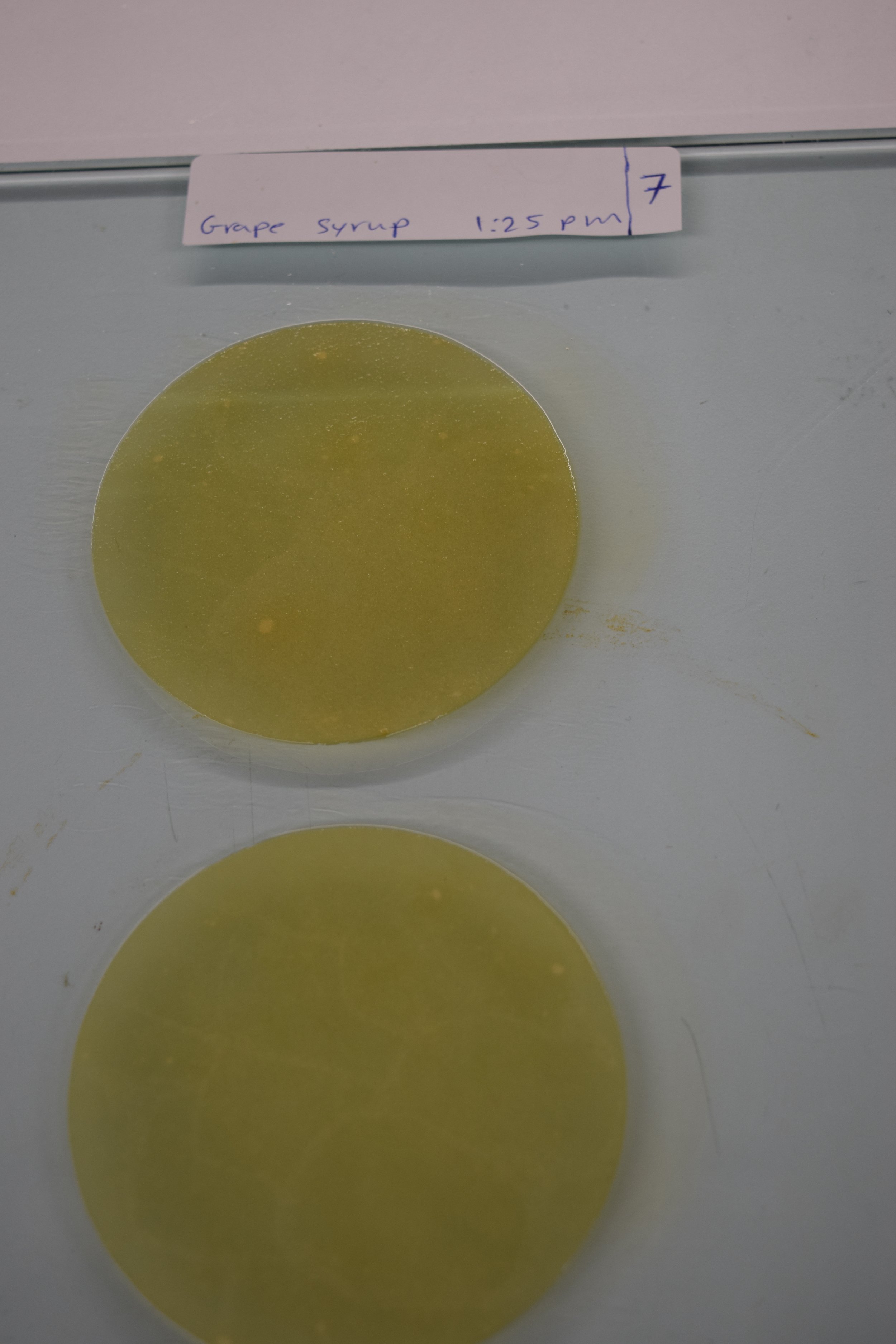GRAPE SYRUP (ŠIREY-E ANGUR)
The common grape-vine (Vitis vinifera), known as "angur" in Persian, is a fruit botanically classified as a berry, from the deciduous woody vines of the species of flowering plant. It is probably the oldest and best-known of the cultivated fruit plants grown in Iran. Raw grapes are 81% water, 18% carbohydrates, 1% protein, and have negligible fat. They are consumed both fresh and dried. Grapes are used for various purposes, including as table grapes, and for making wine, vinegar, seed oil, extract, jam, jelly, juice, and grape syrup (Širey-e angur).
Širey-e angur, known in English as "grapemust" or "grape molasses," is a syrup used as a condiment made from concentrated grape juice, dating back to ancient times, as early as the fifth century BC. It is made by boiling grapes to concentrate their natural sugars. The skins are then removed, and the juice is squeezed through a sieve to extract the liquid, which is then reduced until it becomes dark and syrupy, allowing it to keep indefinitely. The flavor of grape syrup is sweet with slightly bitter undertones, and it can be light or dark in color, depending on the type of grapes used.
Recipes:
Grape syrup is mentioned as a sizing material in Resaleh-ye Joharrieh (Mid- 9th A.H./15th A.D.),, Resāle dar Bayān-e Kāḡaḏ Morakkab va Ḥall-e Alvān (Mid- 9th A.H./15th A.D), Golzār-e Ṣafā (950 A.H./1543 A.D.), and Ḵaṭṭ va Morakkab (978 A.H./1571 A.D.). The recipes of the first two sources are identical, and the use of grape syrup is recommended along with other sizing materials. It is emphasized that the grapes used should be seedless.
دیگر آب خربزهٔ شیرین و آب تخم خیارَین و شیرهٔ انگور بی دانه و حلیم برنج بی روغن و آب صمغ عربی و آنچه بدینها ماند مقوٌی کاغذ است و همچون آینه سازد. پس هر کدام اختیار کند مجموع مجرٌب است
Other sizings, such as sweet melon juice, cucumber (or muskmelon) seed’s mucilage, seedless grape syrup, oil-free rice mush, gum-arabic, and those similar to these, make paper strong, and when it is burnished, it will be smooth like a mirror. All are good choices.
Seyrafi discusses grape syrup as the fourth best ingredient among the six sizes after psyllium, sweet melon juice and cucumber seed in Golzār-e Ṣafā (950 A.H./1543 A.D.). He stresses the point that the grape syrup should be sieved:
چارمین شیرهٔ صاف انگور
Fourthly, grape syrup, smooth and fine,
A sweet coating for paper to shine.
In Ḵaṭṭ va Morakkab, Hosseini Aqili Rostamdari (978 A.H./1571 A.D.) also mentions:
ودیگر آن که شیرة انگور صاف کرده کاغذ بدان برکشند
.. and, moreover, grape syrup is filtered and applied to paper as sizing.
Experiment:
Take some grapes, preferably in light shade, and boil them to concentrate their natural sugars. Remove the skins, and squeeze the juice through a sieve to extract the liquid. Reduce the liquid until it becomes dark and syrupy, allowing it to keep indefinitely. Pour the syrup into a tray or glass container. Add water to thin the syrup if necessary. Dip the paper in for an hour. Take out the paper and hang it to dry. After it is completely dried, burnish it with a burnishing tool to obtain a smooth surface."
Alternatively, you can use ready-made natural grape syrup and add water to thin it as required, following the sizing process.



